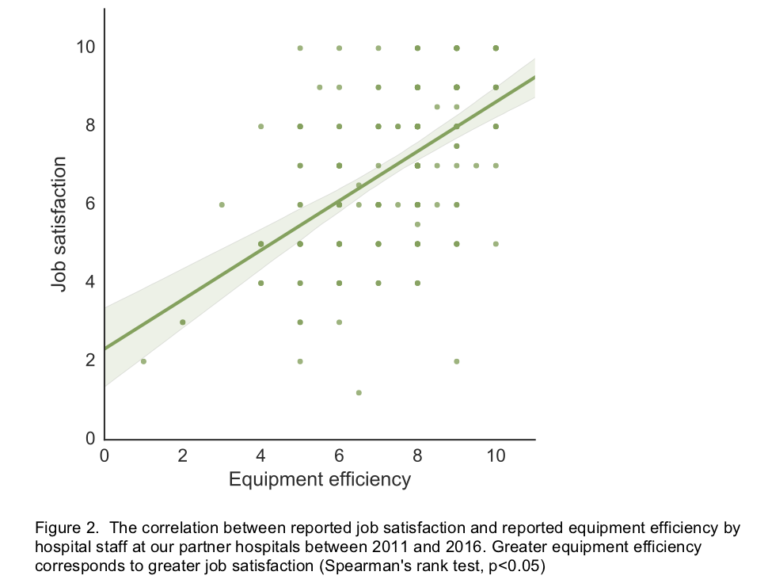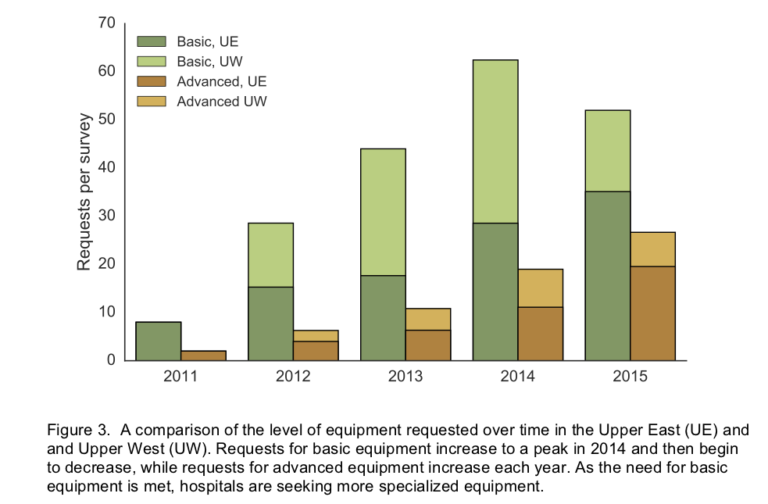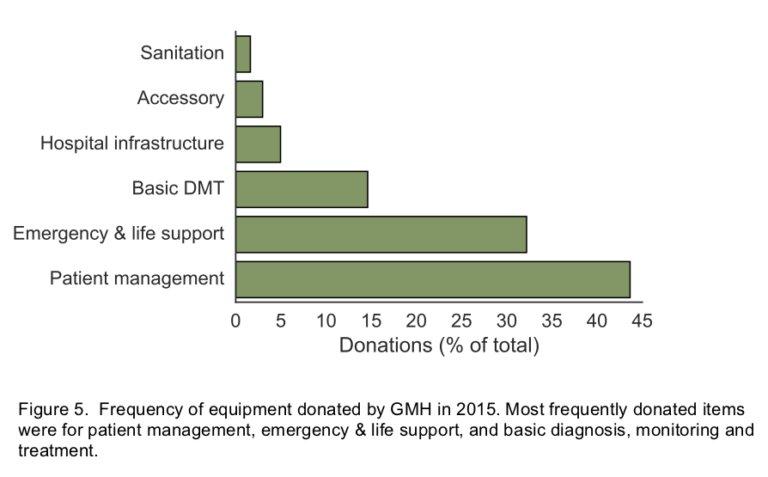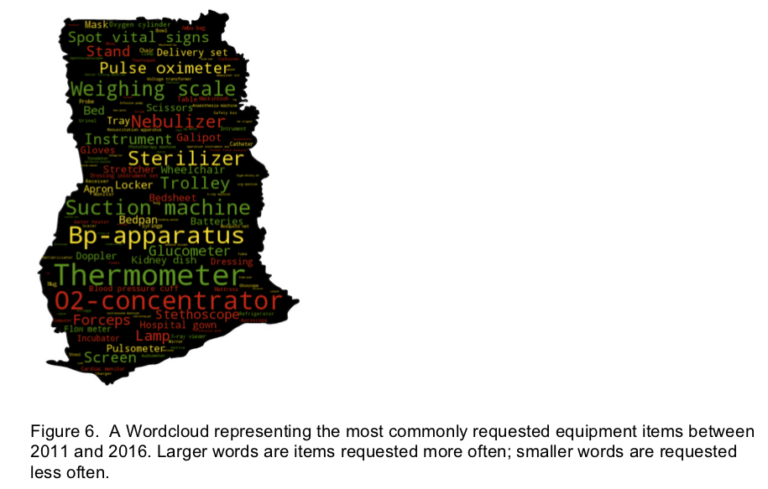Impact Summary
GMH works to assess our impact using quantitative and qualitative analyses.
GMH has made significant progress towards ensuring all district hospitals in the UER and UWR have sufficient equipment to perform eight fundamental services: administration of oxygen; nebulization; monitoring of patient vital signs; feto-maternal monitoring; equipment sterilization; patient stabilization; surgical procedures; and deliveries.
Table 1 gives an overview of the degree of sufficiency achieved across all hospitals, with a majority of hospitals exhibiting 100% sufficiency in 5 of the 8 essential services: providing nebulization, monitoring patient vital signs, patient stabilization, surgical procedures, and performing deliveries. However, these values do not account for the duration of GMH intervention, which varies from 1 to 6 years depending on the specific hospital partner. There is a strong positive relationship between the duration of GMH intervention and the average hospital equipment fulfillment score (Figure 1). The four hospitals with the lowest fulfillment scores are those most recently added to the program.


In 2016, Ghana Medical Help conducted a 5 year impact review. We assessed the relationship between hospital equipment efficiency and job satisfaction among hospital staff (Figure 2). This is an important indicator that better equipment can lead to lower staff turnover and better staff retention in rural and remote hospitals.
We also looked at the change in nature of equipment requested in our quarterly surveys over time, and found that over the course of intervention the proportion of requests for basic equipment decreased while the proportion of requests for advanced equipment increased, indicating that the basic equipment needs are being met (Figure 3).
GMH emphasizes the importance of addressing the genuine, expressed needs of the hospitals by tailoring the equipment donations using specific inclusion criteria. Figures 4 and 5 show that the most donated equipment types match with the most requested equipment types.
Certain equipment items are requested at a very high frequency, whereas others may only be requested by a single ward. Figure 6 is a unique depiction of the request frequency for various equipment items.







